-
Viewpoint on 'IONS'
Viewpoint on 'Scientific Literacy'
- Proudly sponsored by
-


-
The Number of Life
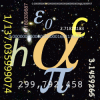
1/137… give or take: the value of the fine-structure constant. Our Universe, our life and everything we know depend on this number. What would the consequences be, if this were to change?
-
Solar Fuel: No More Drilling!
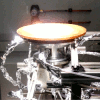
The Earth’s reserve of fossil fuels is limited, and their production and use pollute our environment. Solar collectors offer a possible solution to the increasingly pressing demands for economically and environmentally sustainable energy.
-
The Random Walk towards Quantum Computing
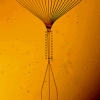
Subtle quantum effects will be at the heart of the quantum computers of the future. Very few existing setups, however, offer the necessary stability and control to exploit such effects at the moment. Arrays of waveguides meet this challenge.
Volume 6 Story 8 - 15/9/2009
A Brighter Future
The displays of the future will be stretchable, twistable, deformable into any shape, and, perhaps more importantly, durable, efficient, and cheap. This is the promise of a new approach for manufacturing inorganic light emitting devices (ILEDs).
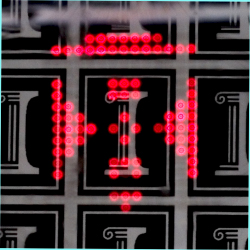
Today you are most likely reading this article on a liquid-crystal display (LCD) screen. However, this is going to change soon. Light-emitting diode (LED) displays are already taking over. Now, a new engineering breakthrough will allow the manufacturing of LED displays that are brighter, more efficient, more durable, and cheaper. The new approach has been demonstrated by an international research group led by John A. Rogers from the University of Illinois at Urbana-Champaign (USA) and including colleagues from Northwestern University (USA), the Institute of High Performance Computing in Singapore, and Tsinghua University in Beijing (China).
LEDs are electronic devices constituted by a light-emitting semiconductor material sandwiched between two electrodes that glows when a voltage is applied. LEDs come in two flavors: Organic LEDs (OLEDs) and Inorganic LEDs (ILEDs).
OLEDs can already be found in many devices we use everyday, such as, for example, cell phones and portable mp3 players, because they offer faster refresh rates and brighter colors than conventional LCD screens. The light is emitted by an organic material, which is deposited on a substrate by a printing process. This is pretty much the same technology used to print computer chips — a very well established technology that makes OLED manufacturing very cheap. For example, all one million OLEDs of a computer screen can be printed at once.
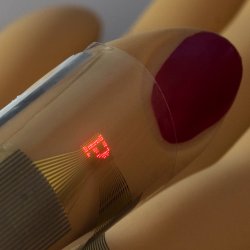
ILEDs use an inorganic semiconductor to emit light. This makes them brighter, more efficient, and more durable than OLEDs. Unfortunately, the technology currently used to fabricate them is based on cutting them out of a semiconductor wafer and assembling them with a robotic arm one by one. Obviously, such technology cannot be scaled effectively down to very small ILEDs – under a few hundred microns – or scaled up to high-pixel count screens – over a few thousand pixels. What a cumbersome task it would be to assemble one million ILEDs into a standard computer screen! That is the reason why ILED computer screens do not yet exist, despite the fact that ILEDs have dominated the market of huge outdoor video billboards, like the ones you can see in Times Square, for decades.
Rogers and colleagues’ approach overcomes such limitations by manufacturing all ILEDs needed for a certain screen at once. This allows for much smaller ILEDs, because these do not need to be manipulated one by one, and hence for screens with many more pixels. Of course, for such technology to become reality various technological breakthroughs were necessary. "There are really three parts that come together," explains Rogers: The ILEDs are grown all at once on a sacrificial layer, then they are moved onto the final substrate, which can be virtually anything from glass to rubber, and finally they are wired directly onto this last substrate.
Rogers explains that, compared to conventional ILED technologies, the new ILEDs are "much smaller, much thinner and much more easily integrated into high resolution arrays, in flexible or stretchable formats." "Inorganic LEDs were bulky, rigid and hard to make dense arrays," comments Zhenqiang (Jack) Ma from the University of Wisconsin-Madison (USA) "This study provides a unique way toward dense array of ILEDs."
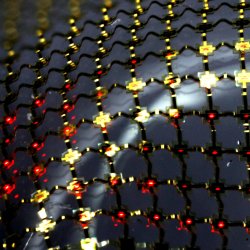
The next step will be to integrate the new technology into commercial products. About the time-to-market, Rogers is optimistic "for general or specialty lighting devices, perhaps 2-3 years. Simple instrumentation gauging might be next, with displays following." With regards to the cost, Rogers says that it is hard to compare the new ILED technology to the current OLED technology, "we feel that the nearest term commercial opportunities are in general lighting, where we can replace current versions of LED lighting systems with ones that are much thinner, which involve much larger numbers of LEDs for better uniformity and lower cost, due to the processing advantages. For systems such as the ones mentioned here/these, detailed cost modeling was done. The results led to the launch of a startup company, with venture capital backing, to pursue commercialization."
"This is a very nice work based on the technology Rogers and colleagues have been developing over the years to deposit semiconductor over virtually any substrate," says Ali Javey from the University of California at Berkeley (USA). Thanks to this new fabrication technology, in only a few years’ time the fashion might well be jackets with ILEDs incorporated into the tissue, for a respectable, classic look during the day, changing into trendier, flashing bright colors for going clubbing. A few more years down the line, you might be able to fold your laptop and carry it in your pocket.

A Brighter Future
for LED Displays
The displays of the future will be stretchable, twistable, deformable into any shape, and, perhaps more importantly, durable, efficient, and cheap. This is the promise of a new approach for manufacturing inorganic light emitting devices (ILEDs).
Transparent ILED display. The transparent micro-ILED array is placed in front of the logo pattern of the University of Illinois at Urbana-Champaign (USA).
LEDs are electronic devices constituted by a light-emitting semiconductor material sandwiched between two electrodes that glows when a voltage is applied. LEDs come in two flavors: Organic LEDs (OLEDs) and Inorganic LEDs (ILEDs).
OLEDs can already be found in many devices we use everyday, such as, for example, cell phones and portable mp3 players, because they offer faster refresh rates and brighter colors than conventional LCD screens. The light is emitted by an organic material, which is deposited on a substrate by a printing process. This is pretty much the same technology used to print computer chips — a very well established technology that makes OLED manufacturing very cheap. For example, all one million OLEDs of a computer screen can be printed at once.

Wrappable ILED display. The micro-ILED display is printed on a thin sheet of plastic and wrapped around a mannequin finger.
Rogers and colleagues’ approach overcomes such limitations by manufacturing all ILEDs needed for a certain screen at once. This allows for much smaller ILEDs, because these do not need to be manipulated one by one, and hence for screens with many more pixels. Of course, for such technology to become reality various technological breakthroughs were necessary. "There are really three parts that come together," explains Rogers: The ILEDs are grown all at once on a sacrificial layer, then they are moved onto the final substrate, which can be virtually anything from glass to rubber, and finally they are wired directly onto this last substrate.
Rogers explains that, compared to conventional ILED technologies, the new ILEDs are "much smaller, much thinner and much more easily integrated into high resolution arrays, in flexible or stretchable formats." "Inorganic LEDs were bulky, rigid and hard to make dense arrays," comments Zhenqiang (Jack) Ma from the University of Wisconsin-Madison (USA) "This study provides a unique way toward dense array of ILEDs."

Stretchable ILED display. The stretchable micro-LED display consists of an interconnected mesh of printed micro LEDs bonded to a rubber substrate.
"This is a very nice work based on the technology Rogers and colleagues have been developing over the years to deposit semiconductor over virtually any substrate," says Ali Javey from the University of California at Berkeley (USA). Thanks to this new fabrication technology, in only a few years’ time the fashion might well be jackets with ILEDs incorporated into the tissue, for a respectable, classic look during the day, changing into trendier, flashing bright colors for going clubbing. A few more years down the line, you might be able to fold your laptop and carry it in your pocket.
Giovanni Volpe
2009 © Optics & Photonics Focus
GV is currently working as a postdoctoral researcher at the Max Planck Institute in Stuttgart (Germany).

Sang-Il Park, Yujie Xiong, Rak-Hwan Kim, et al., Printed Assemblies of Inorganic Light-Emitting Diodes for Deformable and Semitransparent Displays, Science (2009) 325, 977-981 (link).